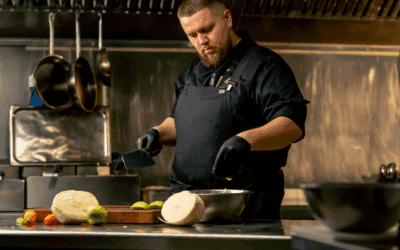Winning consulting projects is akin to achieving success in sports; both require a clear strategy, a cohesive team, and effective leadership. Whether you are spearheading a high-stakes consulting initiative or leading your favorite sports team to victory, the underlying principles are strikingly similar.
Success in consulting, much like sports, hinges on the right blend of talent, preparation, and execution. Building a dream team for consulting projects involves not just assembling skilled professionals but also ensuring that they work together seamlessly towards a common goal. Let’s explore the seven steps that can guide you in assembling and leading a team that will drive your consulting projects to success.
What do basketball and consulting projects have in common? More than you might imagine! Both require strategy, teamwork, and effective leadership to achieve success. Just as a basketball coach crafts a game plan and selects the right players, a project manager orchestrates a project’s trajectory and assembles a team of experts. Let’s take a playful dive into how basketball principles can illuminate the steps to building your dream consulting team.
1. Establish Internal Consensus: Huddle Up!
Alright, team! Before we jump into the game, let’s take a cue from our favorite basketball squads and make sure we’re all on the same page. Imagine trying to get Michael Jordan and Isiah Thomas to play nice together in the ’80s and ’90s. Yeah, not gonna happen. Their legendary rivalry would have made teamwork a nightmare.
So, how do we avoid our own internal Jordan vs. Thomas situation? Start with a kickoff meeting and get all the key players (aka stakeholders) in the room. Talk about the project’s goals, what you hope to achieve, and any potential challenges. Encourage everyone to speak up—yes, even the quiet ones in the back. You want everyone’s concerns and ideas out in the open. This way, everyone feels like they’re part of the game plan.
Next, write down everything you’ve agreed on. This isn’t just a “because the coach said so” moment. Documenting your goals and strategies means you have a playbook to refer back to as the project progresses. Regularly check in to make sure you’re still on track and that no one’s gone rogue.
Building internal consensus early on is like a solid pre-game huddle. It gets everyone hyped and ready to work together towards a common goal. Plus, it helps prevent those pesky misunderstandings that can trip up even the best teams.
2. Define Clear Expectations: Set Up the Play
Creating a Request for Proposal (RFP) is like designing your team’s playbook. You need to be crystal clear about your objectives, deliverables, and timelines. This helps potential consultants understand your needs and how they can help you score.
Think of it like the Harlem Globetrotters. These guys are known for their creativity and flair on the court. Sure, they have a playbook and know their roles, but they also leave room for those amazing trick shots and jaw-dropping moves. Your RFP should strike a similar balance.
Start with a detailed project description. Lay out the scope of work, expected outcomes, and how you’ll evaluate success. This is your game plan. Outline the project timeline, including key milestones and deadlines. Be specific about any particular requirements or constraints, like budget limits or specialized skills needed. This information allows consultants to tailor their proposals to your needs, just like players adjusting their moves based on the coach’s strategy.
Don’t forget to clearly define your evaluation criteria. This transparency ensures consultants know how their proposals will be judged and helps you compare them fairly. Think of this as your team’s scouting report – you need to know what you’re looking for to pick the best talent.
A well-crafted RFP sets clear expectations and provides a roadmap for potential consultants, much like a playbook guides a basketball team. But remember, just like the Globetrotters, you want to leave a little room for creativity. After all, you’re looking for innovative solutions and fresh ideas. The most important thing is to get all your stakeholders on the same page from the start. That way, you avoid any surprises or disasters down the road.
3. Invite the Right Consultants: Scout for Talent
In basketball, scouts look for players who fit the team’s strategy and culture. You want the best talent, but it’s about more than just big names. Sure, you might dream of signing LeBron James, the player everyone wants. He’s a superstar and would definitely impress your higher-ups. But let’s be real, LeBron comes with a hefty price tag (and for good reason—LeBron fans, don’t come at me just yet!).
Now, consider the fresh talent on the scene, like Victor Wembanyama. He’s young, incredibly skilled, and a bit easier on the budget. Plus, he brings that new energy and potential for growth. Just like choosing between seasoned pros and promising rookies, finding the right consultant means balancing experience and cost while ensuring they fit your team’s vibe.
Start by researching potential consultants with a proven track record in similar projects. Case studies and thought leadership articles are great ways to understand how they work and what they bring to the table. You can use platforms like Improveo.app to search for profiles organized by industries and consulting capabilities.
When inviting consultants to bid, send your detailed RFP and make sure to brief them properly. Just like there are myriad ways to score in basketball, there are myriad ways to respond to an RFP. A thorough briefing helps consultants understand your specific needs and tailor their proposals accordingly. This step is also a great opportunity to assess their fit with your team. If you’re unsure about a consultant, organize a call before inviting them to the bid. This gives them a chance to introduce themselves and their company, and it gives you a chance to gauge their compatibility.
Finding the right consultants is like scouting for talent—you want the best players who can work together seamlessly. So, who would you rather play with if you were an NBA-level player: the legendary LeBron or the up-and-coming Wemby? Either way, it’s about choosing the right fit for your team and project.
4. Select the Best Proposal: Draft Your Stars
Alright, so you’ve got your list of potential consultants, and now it’s time to draft your dream team. Think of this step as drafting the best players—you want top talent on your side to ensure your project is a slam dunk.
Carefully evaluate the proposals you receive. Look for consultants who offer innovative solutions, have a proven track record, and demonstrate a clear understanding of your project. Just like in basketball, you want players who not only shine individually but also fit seamlessly into your team’s strategy and culture.
Take a cue from legendary coaches like Phil Jackson or Gregg Popovich. They were masters at finding the right players who fit their game plan, worked well with existing team members, and had the potential to grow. Plus, they always kept an eye on the budget—easy peasy, right?
Develop a scoring system based on your evaluation criteria to objectively compare the proposals. Consider factors such as the consultant’s experience, approach to the project, proposed timeline, and cost. Look for proposals that offer creative and practical solutions tailored to your specific needs.
Additionally, assess the consultant’s understanding of your organization and the project’s goals. A consultant who demonstrates a deep understanding of your needs is more likely to deliver successful results. Don’t hesitate to ask for additional information or clarification if needed.
Once you’ve evaluated all the proposals, select the one that best meets your criteria and aligns with your project’s objectives. Drafting the best proposal is like selecting the top players for your team—it sets you up for success and ensures you have the right mix of skills, creativity, and compatibility.
So, channel your inner Phil Jackson or Gregg Popovich. Find those star consultants who can fit into your game plan, play well with your team, grow better, and fit the budget. With the right players on your side, you’re all set for a winning season!
5. Sign a Solid Contract: Seal the Deal
A well-drafted contract is your playbook for the project. It should protect your interests, define responsibilities, and outline the project’s scope and timelines. This agreement sets the stage for a smooth collaboration and helps prevent future disputes. Think of it as your game plan, keeping everyone aligned and on track.
When drafting the contract, clearly define the scope of work, deliverables, timelines, and payment terms. Specify any milestones and the criteria for their acceptance. Include provisions for handling changes to the project scope or timelines, as well as procedures for resolving disputes.
Ensure that the contract includes confidentiality and non-disclosure agreements to protect sensitive information. Additionally, outline the roles and responsibilities of both your organization and the consultant to avoid misunderstandings.
To highlight the importance of a solid contract, let’s look at an infamous contract breach in basketball history: the Chris Paul trade fiasco in 2011. The NBA, which owned the New Orleans Hornets at the time, had agreed to trade Chris Paul to the Los Angeles Lakers.
However, the deal was famously vetoed by NBA Commissioner David Stern, citing “basketball reasons.” This unexpected move not only left the Lakers, Hornets, and Houston Rockets (another team involved in the trade) in turmoil but also highlighted the chaos that can ensue when agreements aren’t clear and universally accepted.
Review the contract thoroughly and consider seeking legal advice to ensure that it adequately protects your interests. A solid contract is like a well-crafted playbook – it guides the project and helps prevent issues from arising. Just as the vetoed Chris Paul trade taught the NBA, clarity and agreement on all terms are crucial for smooth execution.
By taking these steps, you ensure that your project starts on solid ground and everyone knows their role, responsibilities, and the rules of the game. This way, you’re not left scrambling like teams in the wake of a sudden trade veto. A clear, thorough contract sets you up for a winning collaboration.
6. Manage Your Project: Coach the Team
Once the project kicks off, managing it effectively is key to success. Think of yourself as the coach of a basketball team. Beyond the flashy dunks and skillful dribbles, what really makes a team excel is the coach’s ability to guide and motivate.
In international basketball, there’s a famous example from the 2004 Olympics: the Greek national team. They weren’t packed with superstars like the USA’s Dream Team. Instead, they were a cohesive unit with a strong sense of teamwork and strategy.
Coached by Fotis Katsikaris and later Ioannis Ioannidis, they played disciplined basketball and relied on teamwork rather than individual brilliance. This approach led them to an unexpected victory over the USA in the semi-finals and eventually earned them the gold medal.
Similarly, in consulting projects, it’s not just about flashy presentations and industry jargon. It’s about effective management and teamwork. Here’s how you can coach your project team to success:
- Maintain Open Communication: Just as a coach keeps communication lines open, ensure everyone knows their roles and responsibilities. Encourage team members to share updates, concerns, and ideas freely.
- Monitor Progress: Use project management tools to track milestones, deadlines, and deliverables. Regular check-ins with both your internal team and the consultant help keep everyone accountable and informed.
- Address Issues Promptly: Like a coach addressing challenges during a game, be proactive in tackling any issues or roadblocks that arise. Provide timely support and feedback to keep the project on track.
Encourage Collaboration: Foster a collaborative environment where your team and the consultant work together towards shared goals. This synergy is crucial for delivering successful results.
7. Get the Right Internal Support: Build a Supportive Bench
Just like in basketball, having a strong bench can make all the difference in your project’s success. These are the players who might not always be in the spotlight, but they provide essential support and depth when it counts.
Think of the Spanish national basketball team during the 2021 Tokyo Olympics. While they had star players like Pau Gasol and Ricky Rubio leading the charge, their success was also attributed to a deep bench of talented players like Sergio Llull, Alex Abrines, and others. These players provided crucial support, stepping up when needed to secure wins and ultimately earn a silver medal.
Similarly, in your consulting project, having a strong internal support team is key. These are the colleagues who may not be directly involved in day-to-day operations but provide expertise, resources, and decision-making support that ensure smooth execution. Here’s how you can build your supportive bench:
- Identify Key Stakeholders: Pinpoint internal colleagues who can offer valuable expertise or resources. Engage them early and keep them informed about project progress and needs.
- Establish a Steering Committee: Consider forming a project steering committee or advisory group comprising key stakeholders. This group can provide strategic guidance, make critical decisions, and offer additional support as required.
- Provide Resources and Information: Equip your internal team with the necessary resources and information to effectively support the project. This ensures they are well-prepared to contribute when called upon.
Building a supportive internal team is like assembling a strong bench in basketball—it provides depth, reliability, and the ability to adapt to challenges. By leveraging your internal resources effectively, you can bolster your consulting team’s efforts and increase the likelihood of achieving project success.
Conclusion: Winning Consulting Projects
In the game of basketball, every team starts with a vision of victory. They assemble their resources, define their play style, and rely on the guidance of their coach to navigate challenges and seize opportunities.
Similarly, in consulting projects, we envision our goals, gather the right talents, and lead our teams towards success. It might not be as glamorous or high-flying as basketball, and certainly, the budgets are different, but each of us plays a crucial role in our field. So, whether you’re drafting proposals like selecting star players or managing projects akin to coaching a team through a season, remember: in the end, we’re all MVPs in our own right. Keep strategizing, collaborating, and shooting for that perfect shot!
Frequently Asked Questions
How do you ensure internal consensus in a consulting project?
Establishing internal consensus involves clear communication, involving all stakeholders early in the project, and regularly checking in to ensure alignment with project goals.
What should be included in an RFP for a consulting project?
An RFP should include a detailed project description, scope of work, objectives, deliverables, timelines, and evaluation criteria. It should also outline any specific requirements or constraints.
How do you select the best consultant for a project?
Select the best consultant by developing an objective scoring system based on evaluation criteria, reviewing proposals for innovative solutions, and ensuring the consultant’s expertise aligns with project goals.
Why is a solid contract important in consulting projects?
A solid contract protects your interests, defines responsibilities, and provides a clear framework for the project. It helps prevent misunderstandings and disputes, ensuring smooth execution.
What are effective project management techniques for consulting projects?
Effective project management techniques include maintaining open communication, using project management tools to track progress, addressing issues promptly, and fostering a collaborative environment.
How can internal support enhance the success of a consulting project?
Internal support provides additional expertise, resources, and decision-making capabilities. Engaging key stakeholders and forming a steering committee can enhance project success by ensuring comprehensive support.








0 Comments